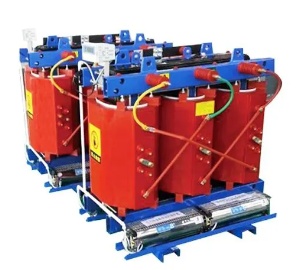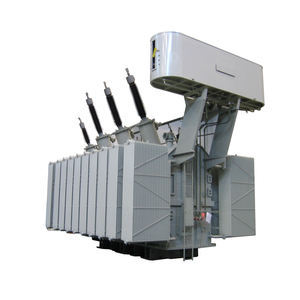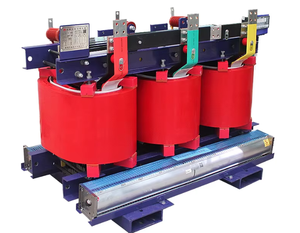Electronic Components Supplier | Transformers, Inductors, Inverters
The Transformer: Power Grid’s Voltage Alchemist
Introduction: The Silent Voltage Translator
Every time you charge your phone or switch on a light, a technological marvel works behind the scenes – the transformer. This unsung hero converts power plant electricity (often 10,000V+) to household 220V with 99% efficiency. Let’s decode its electromagnetic wizardry.
I. Anatomy of a Transformer
Core Components
1. Iron Core
o Stacked silicon steel laminations (0.35mm thick)
o Silicon increases resistivity, reducing eddy current losses by 80%
o Insulated coatings create "magnetic highways"
2. Windings
o Primary coil: AC input creates rotating magnetic field
o Secondary coil: Output voltage induced via electromagnetic coupling
3. Insulation System
o Oil-immersed: Mineral oil acts as coolant and dielectric (flash point >300°C)
o Dry-type: Epoxy resin encapsulation for fire-safe environments
Material Evolution
|
Era |
Core Material |
Breakthrough |
Efficiency |
|
1885 |
Wrought iron |
First practical transformer |
85% |
|
1950s |
Cold-rolled silicon steel |
Losses ↓60% |
95% |
|
2000s |
Amorphous metal |
0.025mm thickness, losses ↓70% |
98.5% |
|
Future |
Superconductors |
Zero-resistance (lab stage) |
>99% |
II. Working Principle: Electromagnetic Ballet
Two-Stage Energy Conversion
1. Electric→Magnetic (Input Side)
o AC current generates a 50/60Hz rotating magnetic field
o Silicon steel core confines flux like a "magnetic tornado"
2. Magnetic→Electric (Output Side)
o Faraday’s Law induces voltage:
VoutVin=NsecondaryNprimaryVinVout=NprimaryNsecondary
o Current inversely proportional to turns ratio:
Iprimary=NsecondaryNprimary×IsecondaryIprimary=NprimaryNsecondary×Isecondary
Key Performance Metrics
-
Voltage Conversion:
-
Step-up (power plants): 1:100 ratio for 110kV→220kV
-
Step-down (homes): 20:1 ratio for 10kV→220V
-
Efficiency: 97-99% in modern units
-
Load Capacity: 500kVA+ for urban substations
III. Cutting-Edge Innovations
Current Challenges
-
Energy Loss: Distribution transformers waste ~3% of global electricity
-
Noise Pollution: 100Hz hum from magnetostriction
-
Sustainability: Mineral oil disposal risks
Next-Gen Solutions
1. Smart Transformers
o Real-time voltage regulation via IGBT switches
o Predictive maintenance using IoT sensors
2. Superconducting Transformers
o YBCO tape windings (liquid nitrogen cooled)
o Shanghai pilot: 60% size reduction, 0.1% losses
3. Eco-Designs
o Biodegradable ester fluids (from plant oils)
o 3D-printed nanocrystalline cores
Conclusion: The Invisible Backbone
From early 20th-century grid expansion to today’s ultra-high-voltage transmission, transformers remain the cornerstone of electrification. As renewable energy demands grow, these electromagnetic workhorses continue evolving – perhaps soon leveraging quantum materials for lossless power transfer.
Tech Trivia: The world’s largest transformer (1,200MVA) weighs 400 tons – equivalent to 300 sedans!







